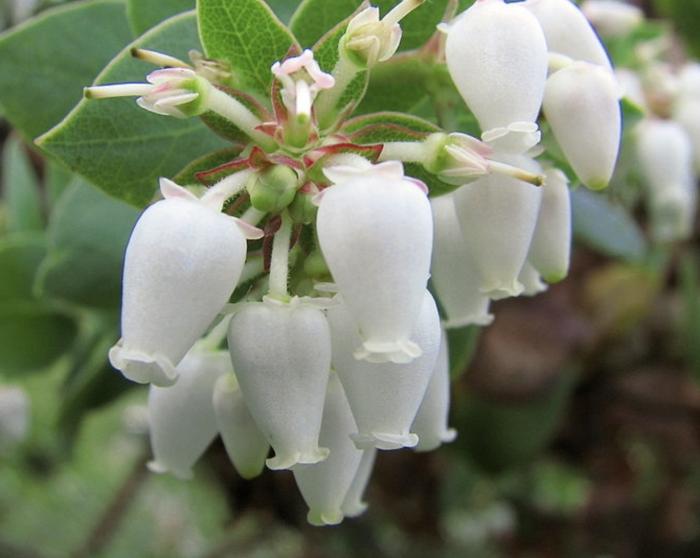Arctostaphylos pallida
Pallid Manzanita

Description
Arctostaphylos pallida, commonly known as Pallid Manzanita, Oakland Hills Manzanita, and Alameda Manzanita, is an upright shrub from the Ericaceae, or heath, family. It grows to around 6 to 13 feet. high. The branches on the shrub are reddish or grayish (more reddish) and they have twigs that tend to be bristly. The ovate to triangular leaves are bristly, strongly overlapping and clasping. They are 1.0 to 1.8 inch long and 0.8 to 1.2 inch wide. The dense, white flowers are urn-shaped and 0.2 to 0.3 inch long. The flowering period is from November to March. A. pallida commonly co-occurs with another manzanita species, Brittle Leaf Manzanita (Arctostaphylos tomentosa ssp. crustacea), but the latter is a burl-forming species with spreading leaves. A. pallida does not form burls. It does best in full sun, attracting hummingbirds and bees. Does well on ridges and slopes. It has red-orange peeling bark.
Plant Type
Shrub
Height Range
6-12'
Width Range
Flower Color
White
Flower Season
Winter, Spring
Leaf Color
Green
Bark Color
Red
Fruit Color
Red
Fruit Season
Summer
Sun
Full
Water
Very Low, Low
Growth Rate
Slow
Soil Type
Unparticular
Soil Condition
Average
Soil pH
Neutral
Adverse Factors
Attracts Bees
Design Styles
Mediterranean, Ranch, Seascape
Accenting Features
Multi-trunk Tree, Showy Flowers, Specimen
Seasonal Interest
Winter, Spring
Location Uses
Background, Lawn, Patio, Raised Planter, Street Tree
Special Uses
Erosion Control, Shade Tree
Attracts Wildlife
Hummingbirds
Water Saving Tip:
Check the soil's moisture level before watering.
You can reduce your water use 20-50% by regularly checking the soil before watering.